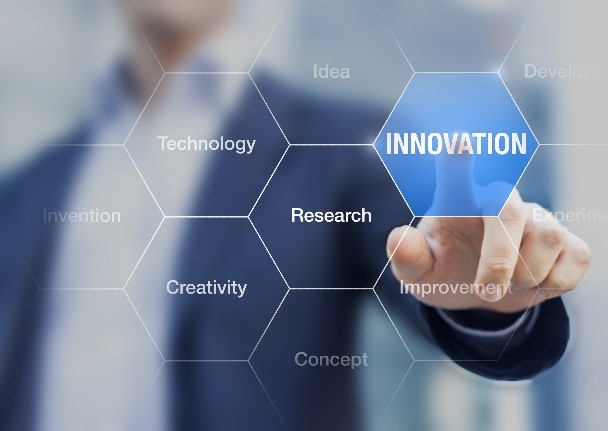Managing the integration of IP and innovation in a digital world: 3rd module of the MIPLM 2022
Digitalization causes a complete paradigm shift of production and innovation options. In a digital environment, innovation systems and management of technology face new challenges. Product development and engineering departments across the globe need to master three fundamental challenges:
- Developing innovative, connected, customer-centric and personalized products and solutions
- Driving efficiency and digitalization of core product development and engineering processes
- Integrating their departments into an agile and integrated partner eco-system
Digitalization can be understood as the use of digital technologies to change a business model and provides new revenue and value-producing opportunities. Digitalization processes accelerate the need for innovation and for innovating faster. Great digital products do not suddenly appear out of nowhere. In fact, they are sophisticated artifacts that have successfully grown into great products after a careful product discovery process. They are delightful experiences, easy to use, and beautiful to look at, providing outstanding value to its users. The vast majority of products fail during the discovery process or shortly after launch. Either they fail at providing a meaningful user value, people do not use them frequently or the number of users does not grow properly. Few products will serve the market: Meaningful products that have mainstream attention, innovative solutions no one imagined before, causing a change in people’s behavior. These are the products we commonly know, admire, and remember. These are the products we want to build.
In this module the difference between disruptive and sustaining innovation, radical and incremental innovation and architectural and modular innovation was discussed. Clayton Christensen was the first to introduce the concept of disruptive innovation in 1995. Disruptive innovation, by definition, refers to a concept, product or service that creates a new value network either by disrupting an existing market or creating a completely new market. In the beginning of the life cycle of an innovation, disruptive innovation generally provides lower performance, and while these kinds of innovations often are not “good enough” to satisfy current customers, they appeal to a different market instead.
Cannot open the video? Please click: The Explainer: How to Be a Disruptor – YouTube
In today’s world of rapid technological innovations, customers demand products and integrated solutions that are always up-to-date, complete with the latest designs and technologies. That shortens established product life cycles and drives demand, not just for frequent product updates and incremental improvements but also for complete makeovers and breakthrough technology innovation. For industrial customers, “traditional” products often need to be digitally enhanced in a whole range of ways, including the addition of apps, human-machine interfaces, remote access and surveillance, predictive maintenance, self-learning adaptive parameter configuration, virtual assistance services, and other digital services that can be integrated seamlessly into existing and evolving full solution eco-systems.
Cannot open the video? Please click: https://youtu.be/IaL8CXDJCX8
In addition, customers are increasingly demanding personalized products and services that are tailored to their specific requirements. That creates challenges for developers and manufacturers who need to establish a modular product strategy that can be individually tailored to the specific features, designs, services and integrated solutions that customers require. Without digitized product development processes, engineering changes become too costly and time-consuming. Customers expect their orders to be fulfilled instantly – with same-day delivery now the new norm. In some industries, just-in-time delivery has already shifted to just-in-sequence delivery where suppliers need to deliver their parts or components within a very short window in the right sequence. All of these trends are dramatically increasing the challenges for product development, so companies are looking to increase the efficiency and output of their product development function while keeping costs under control. The answer lies in enhancing product development with digital tools, new agile development methodologies and automated processes. Digital Champions are already deploying key technologies including web-based, next generation product development techniques, data analytics and AI-based solution design, integrated product lifecycle management (PLM) systems and agile development techniques. And leading companies are using digitally enabled tools to better capture customer needs and design products and integrated solutions that are individualized for specific customers. Most importantly, companies leading digital product development are integrating their activities with key partners and becoming leaders of an integrated development eco-system, which provides customers with integrated complete solutions, rather than individual products and services. Effective co-creation tools, common standards and simultaneous access to joint product development platforms then become part of an integrated eco-system.
Case study presentations on IP Design:
Part I – Brand Value Management: A brand is to be created under which parking garages will be marketed that stand for a unique and individual parking experience.
- Task 1:
Please explain the concept of a garage, where the customer can choose his parking experience according to specific preferences.
– What may be end customer preferences that should be considered?
– Which benefits does the concept generate for garage operators? - Task 2:
Please read “The 4P concept” (Excerpt from: Wurzer, A. / Grünewald, T. / Berres, W. (2016): 360° IP Strategy) provided at the end of this document.
Please explain the 4P-concept and how this concept could apply to the case of an individualized parking experience. - Task 3:
Please outline the brand steering wheel for the brand that should be created. For this purpose, please distinguish the resource perspective and the market perspective of the brand steering wheel.
Resource perspective
– What is the brand competence (heritage) for the case on hand?
– What should be considered in the creation of the brand appearance? - Task 4:
Please outline the brand steering wheel for the brand that should be created. For this purpose, please distinguish the resource perspective and the market perspective of the brand steering wheel.
Market perspective
– What are the brand benefits for the case on hand?
– Which characteristics may the brand tonality have that are useful for the case on hand? - Task 5:
By communicating with the customer, he is given a brand promise that must be proven permanently. This proof is mainly brought about by realizing technology and realizing design. As these can be protected by IP, it is possible to build unique permanent communication positions with the customer. Please explain how the brand promise might be proven in the case on hand:
– What elements may the brand promise have?
– What is necessary for the proof?
– What might be the relevant realizing technologies and realizing design elements? - Task 6:
The brand value can be further enhanced by building a unique eco-system of complementary partners and services around the product. Please give ideas for how such an eco-system could be designed for the individual parking experience.
Here you can follow the presentation to part I:
Cannot open the video? Please click: MIPLM Case Study Innovation Management 1 – YouTube
Presented by:
- Ricardo Cali
- Clement Lim
- Veronique Bolinches
- Claire Laurens de Lopez
- Mohsen Ahmadi
- Greta Zekiene
- Terita Kalloo
- Rita Labundy
Part II – IP Process Management: IP design is a method that can be used to identify a business model’s core elements from a customer’s point of view and protect these elements by IP.
- Task 1:
Please show the core processes of IP management and give a short description of these processes. - Task 2:
Please choose one IP management core process and show examples for related sub-processes. - Task 3:
Please choose any IP management sub-process and show the associated workflows. - Task 4:
Please choose the sub-processes identified in task 2 and define inputs and outputs for these processes. - Task 5:
Please assign the IP management process related functions to typical functions in the company. - Task 6:
Please choose a stylized innovation process and show typical process interfaces with the IP management process.
Here you can follow the presentation to part II:
Cannot open the video? Please click: MIPLM Case Study Innovation Management 2 – YouTube
Presented by:
- Shu Pei Oei
- Johannes Holzmair
- Peter Conlon
- Timofey Rubchenko
- Sinara Travisani
- Sachin Seshadri Sreepathy
- Yanan Huang
- Andreas Werner
Part III – IP Design: IP design is a method that can be used to identify a business model’s core elements from a customer’s point of view and protect these elements by IP.
- Task 1:
Please explain how different design thinking methods can be combined into a unified approach to comprehensively describe a concrete usage scenario and its framework conditions.
This description can be used to systematically identify the inventions that are relevant for the customer. - Task 2:
Please carry out a cognitive walkthrough for the “car in a parking garages” usage scenario, taking into account the individualized parking experience described in the case study. - Task 3:
Choose a part of the process steps you have identified in the course of the cognitive walkthrough. Perform the AEIOU-method for these process steps and present the result in swim lanes. - Task 4:
The usage scenario description allows for deriving the technological tasks that are required to deliver the customer benefit (here: leveraging maximum willingness to pay by satisfying individual parking preferences).
Based on your description of the usage scenario, please identify issues that have to be solved by means of technology to provide the customer benefit.
Note:
These issues are usually described as real-life tasks (e.g. directing users (in)to the parking bay). - Task 5:
In order to work out the relevant inventions from the possible uniqueness environments that have just been identified, they have to be further evaluated and specified. In particular, the real-life task must be transformed into technological task(s).
Please select one of the uniqueness environments you have identified and work out the technical tasks that need to be performed to solve the real-life task. - Task 6:
If no solution has yet been developed for the technical problem (or if circumvention solutions are also to be considered for the generation of IP), a systematic breakdown of attributes makes sense. The targeted modification of the attributes and a deeper breakdown reveal alternative solutions.
Please select one of the invention cores you have identified, describe the individual points of the technical problem and work out different features that could solve them.
Here you can follow the presentation to part III:
Cannot open the video? Please click: MIPLM Case Study Innovation Management 3 – YouTube
Presented by:
- Felipe Bustos
- Merve Şimşek
- Steffen Rutter
- Nora Rüter
- Anders Isaksson
- Branimir Puškarić



